For many dog lovers, the joy of companionship can be overshadowed by the challenge of allergies or the constant battle with pet hair around the house. The search for “a dog breed that doesn’t shed” is a common one, often leading to terms like “hypoallergenic dogs.” While no dog is truly 100% allergen-free, understanding which breeds are considered low-shedding can make a significant difference for individuals with allergies and those seeking a cleaner home environment.
This guide from Dog Care Story delves into the world of low-shedding dog breeds, clarifying what makes a dog a better choice for allergy sufferers, highlighting specific breeds that are renowned for their minimal shedding, and offering essential tips for living harmoniously with your chosen companion. If you’re looking for a type of dog that doesn’t shed, you’ve come to the right place.
Understanding Shedding and Allergies: What “Low-Shedding” Really Means
When people search for a dog breed that doesn’t shed, they are often hoping to avoid allergens. It’s a common misconception that dog hair itself causes allergies. In reality, dog allergies are typically triggered by dander (flakes of dead skin), saliva, and urine, all of which contain specific proteins. These allergens stick to hair, which then spreads through the environment as the dog sheds.
Therefore, “low-shedding” dogs are often referred to as “hypoallergenic” because they release fewer dander-laden hairs into the air and onto surfaces. This reduced shedding means fewer allergens circulating, which can significantly lessen allergic reactions for sensitive individuals. However, it’s crucial to remember that no dog is completely allergen-free. Even hairless breeds still produce dander, saliva, and urine. The key is reduced exposure through minimal shedding.
Many low-shedding breeds have hair that grows continuously, similar to human hair, rather than having a growth cycle that includes significant shedding. This type of coat often requires regular grooming, brushing, and trimming to prevent matting, but it helps keep allergens contained.
Top Dog Breeds That Don’t Shed (or Shed Minimally)
Here are 30 dog breeds celebrated for their low-shedding coats, making them excellent choices for many households:
1. Poodle
 A white Standard Poodle with a curly, low-shedding coat walking gracefully through green grass.
A white Standard Poodle with a curly, low-shedding coat walking gracefully through green grass.
Poodles come in three sizes—Standard, Miniature, and Toy—all known for their intelligent minds and virtually non-shedding, curly coats. Originally bred for hunting, the Standard Poodle is the largest, while Miniature and Toy Poodles were developed as smaller versions. Regardless of size, regular brushing is essential for their curls to prevent tangles and matting, making them a fantastic best dog to get that doesn’t shed for many families.
2. Yorkshire Terrier
Little Yorkies are renowned for their spunky, affectionate personalities and their long, silky, low-shedding coats. These small dogs adapt wonderfully to various living situations, from spacious homes to cozy apartments, provided they receive ample attention and love from their human companions.
3. Shih Tzu
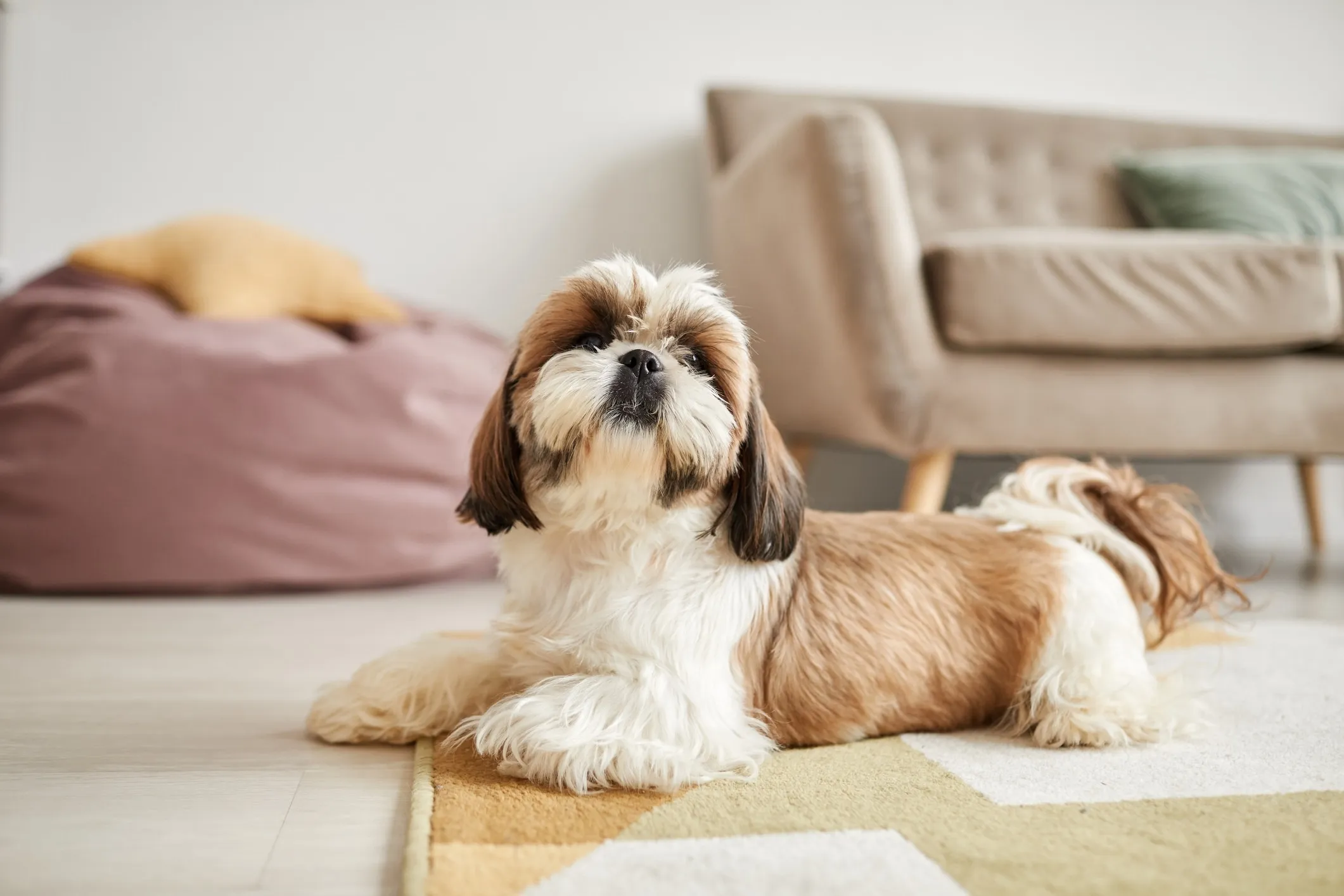 A brown and white Shih Tzu with a friendly expression lying comfortably on a living room floor.
A brown and white Shih Tzu with a friendly expression lying comfortably on a living room floor.
The Shih Tzu is an ancient companion breed with a thick, luxurious, low-shedding coat and a naturally friendly temperament. Their charming demeanor makes them popular, but their brachycephalic (flat) face can lead to health concerns like overheating, breathing difficulties, and tear stains. Consistent eye cleaning can help manage tear stains.
4. Miniature Schnauzer
One of three Schnauzer breeds, the Miniature Schnauzer is compact, standing up to 14 inches tall and weighing 10–20 pounds. These smart and adaptable dogs fit well into diverse environments but require at least an hour of daily exercise to stay happy and healthy. Their wiry coat is a low-shedding type.
5. Standard Schnauzer
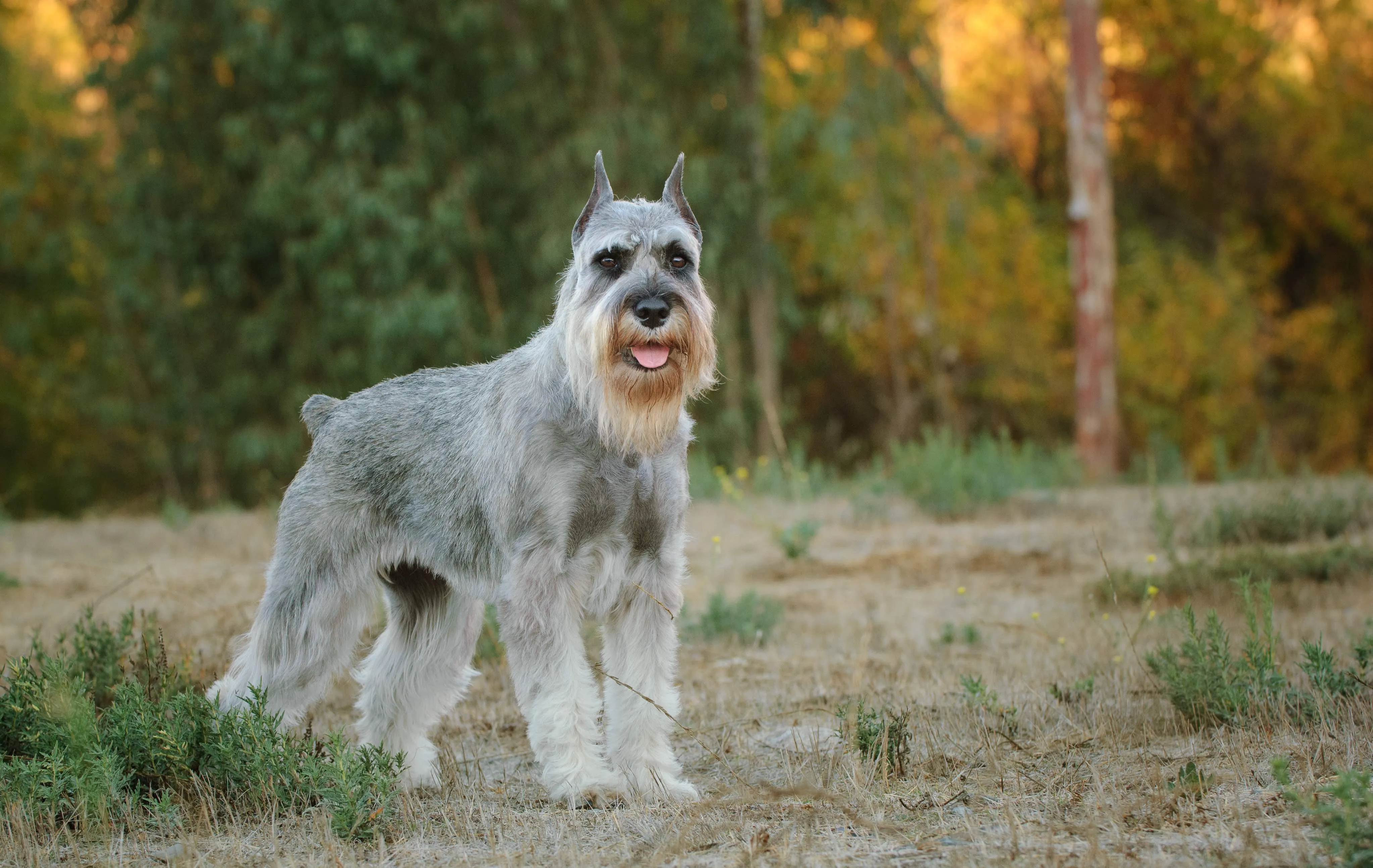 A dignified grey Standard Schnauzer with a wiry, low-shedding coat standing alertly in a field.
A dignified grey Standard Schnauzer with a wiry, low-shedding coat standing alertly in a field.
The Standard Schnauzer shares many appealing traits with its Miniature counterpart but comes in a slightly larger package, weighing up to 45 pounds. These active dogs thrive on long walks, games of fetch, and engaging with puzzle toys, making their low-shedding coats a bonus for energetic owners.
6. Giant Schnauzer
Reaching over 27 inches in height and up to 85 pounds, the Giant Schnauzer is a formidable yet loyal companion and a fantastic biggest dog breed that doesn t shed. These intelligent dogs require substantial daily exercise, including long walks, runs, and hikes, to maintain their well-being and keep their low-shedding coat in good condition.
7. Bichon Frise
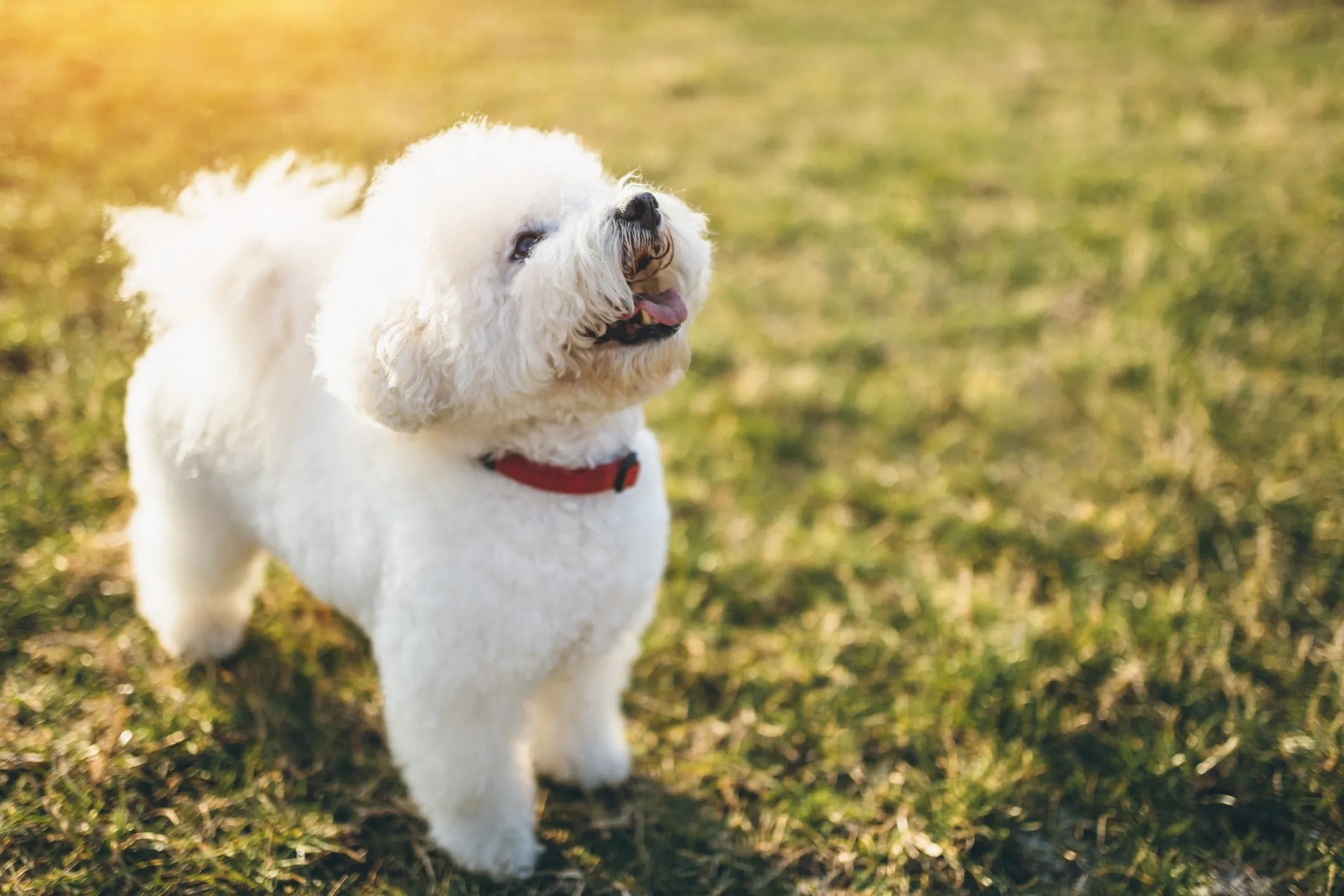 A fluffy white Bichon Frise with a curly, low-shedding coat looking curiously upwards in green grass.
A fluffy white Bichon Frise with a curly, low-shedding coat looking curiously upwards in green grass.
Small, playful, and incredibly affectionate, the Bichon Frise boasts a distinctive curly, low-shedding coat. Their high intelligence and eagerness to please make them highly trainable, quickly mastering basic commands and delighting families with their clever tricks.
8. Chinese Crested
The Chinese Crested is a small breed recognized for its unique appearance. It comes in two varieties: the hairless, with smooth skin and tufts of hair on the head, tail, and paws, and the Powderpuff, covered in a long, silky coat. Both varieties are considered low-shedding and make playful, affectionate companions.
9. Portuguese Water Dog
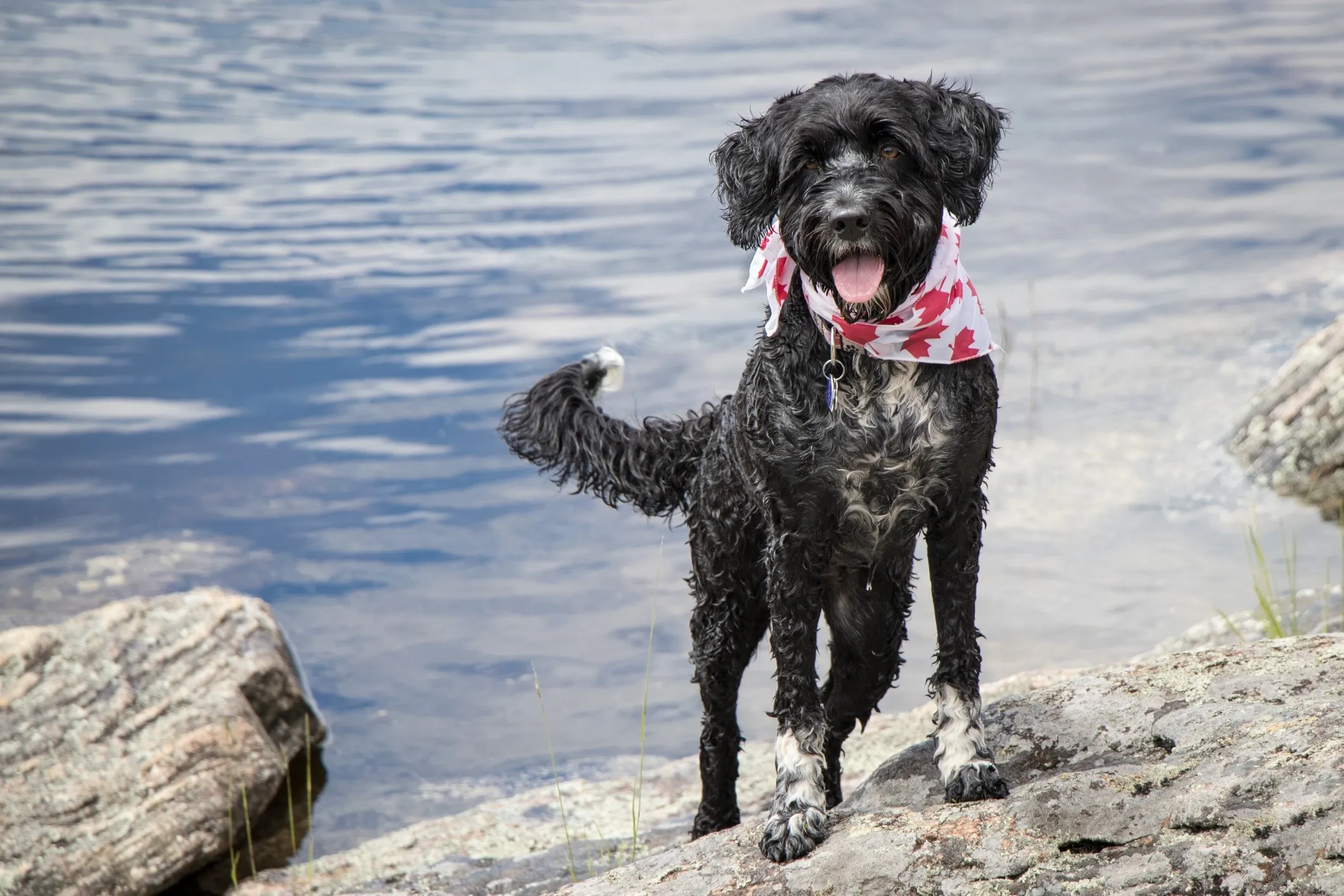 A black and white Portuguese Water Dog with a curly, dense coat wearing a red bandana in front of water.
A black and white Portuguese Water Dog with a curly, dense coat wearing a red bandana in front of water.
Originally bred to assist fishermen, this medium-sized breed is celebrated for its thick, curly, low-shedding coat. Portuguese Water Dogs are intelligent, highly trainable, and friendly. These high-energy pups thrive on regular exercise, especially swimming, which keeps them happy and healthy.
10. Labradoodle
A cross between a Labrador Retriever and a Poodle, the Labradoodle was initially bred as a hypoallergenic service dog. They are intelligent, friendly, and make wonderful family pets. Their gentle nature and trainability are enhanced by early socialization and consistent exercise, contributing to their low-shedding appeal.
11. Goldendoodle
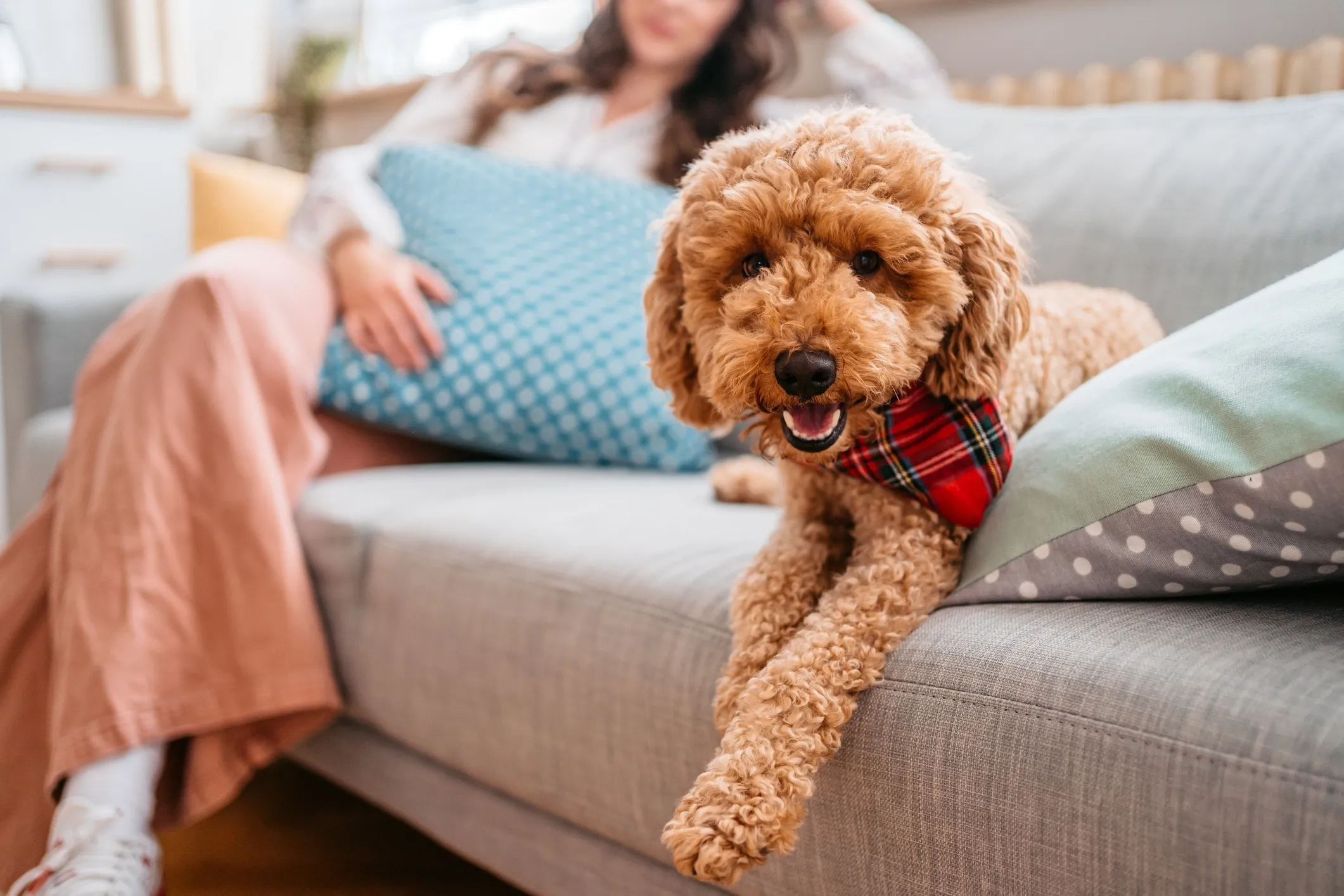 A fluffy Goldendoodle with a wavy, low-shedding coat lying on a couch with a person in the background.
A fluffy Goldendoodle with a wavy, low-shedding coat lying on a couch with a person in the background.
Goldendoodles are another popular “doodle” breed, cherished for their low-shedding coats, friendly disposition, and high intelligence. While often known for their golden hues inherited from their Golden Retriever parent, they can display a wide array of colors and coat textures. Frequent grooming with a slicker brush is crucial to prevent matting.
12. Lagotto Romagnolo
Lagotto Romagnolo dogs were historically water retrievers, with their curly, woolly, low-shedding coats providing protection in cold waters. Though less common, these dogs are typically good with children and other pets, making them excellent family additions.
13. Affenpinscher
 A close-up of a black Affenpinscher dog showcasing its distinctive wiry, low-shedding coat.
A close-up of a black Affenpinscher dog showcasing its distinctive wiry, low-shedding coat.
Affenpinschers are small dogs known for their distinctive “monkey-like” appearance and dense, wiry coats that produce minimal allergens. Their unique coat requires dedicated care, including regular at-home brushing and occasional hand-stripping, where hair is removed by the root rather than trimmed.
14. Irish Water Spaniel
Friendly, intelligent, and highly trainable, the Irish Water Spaniel is another water-loving breed with a thick, curly, liver-colored coat that sheds minimally. As a high-energy breed, ample exercise is vital to keep them happy and healthy.
15. Aussiedoodle
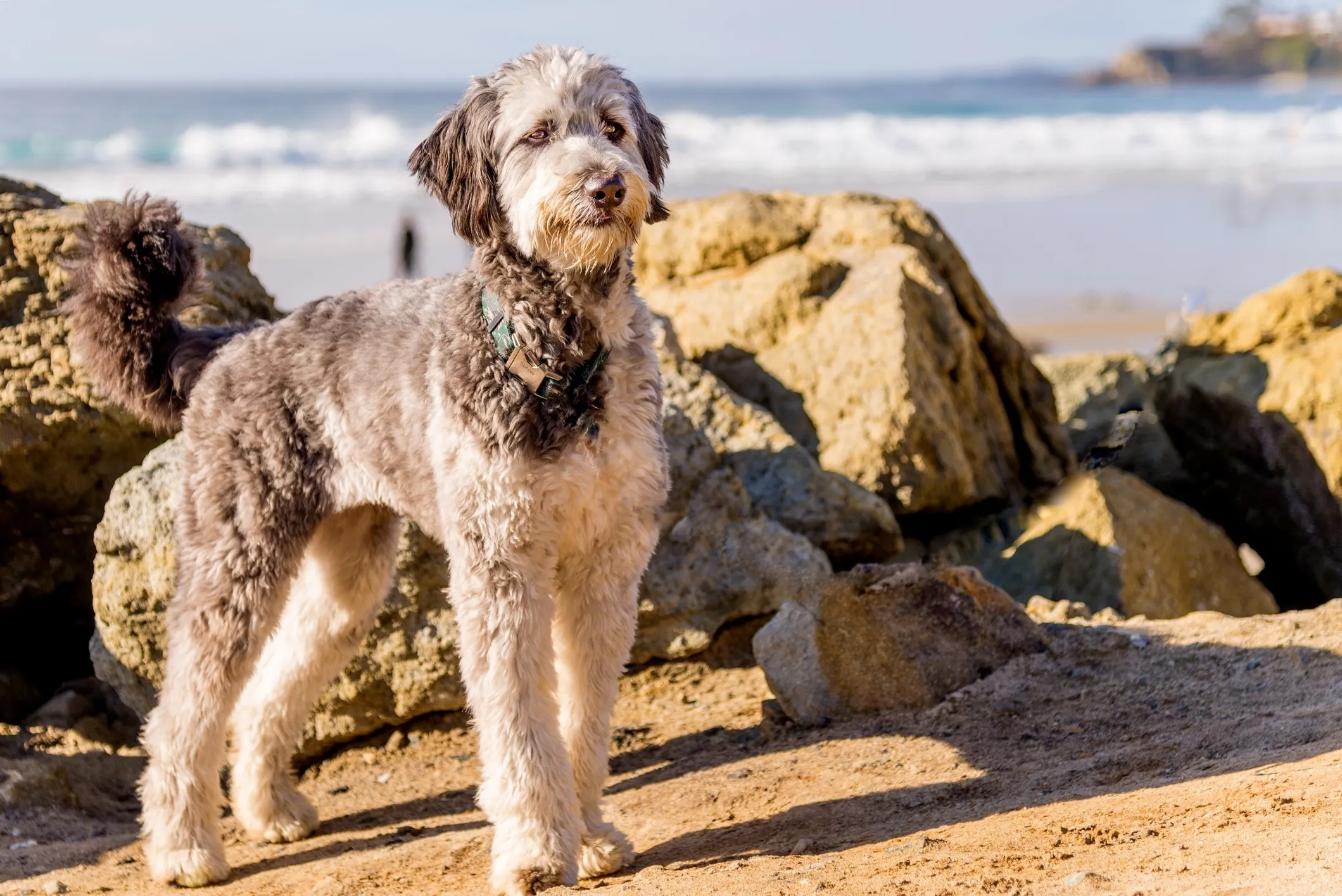 A lively Aussiedoodle dog with a wavy, low-shedding coat standing on a beach.
A lively Aussiedoodle dog with a wavy, low-shedding coat standing on a beach.
The Aussiedoodle, a cross between an Australian Shepherd and a Standard or Miniature Poodle, is a very smart and energetic low-shedding companion. Due to their active parent breeds, they require substantial exercise and mental stimulation with enrichment toys to prevent boredom and potential destructive behaviors.
16. Bolognese
Bolognese dogs are charming low-shedding pups from Italy, characterized by their long, fluffy white coats. Despite their typically messy appearance, their coats need consistent grooming. These playful, easygoing dogs are known for getting along well with children and other pets and can adapt to various living situations.
17. Maltese
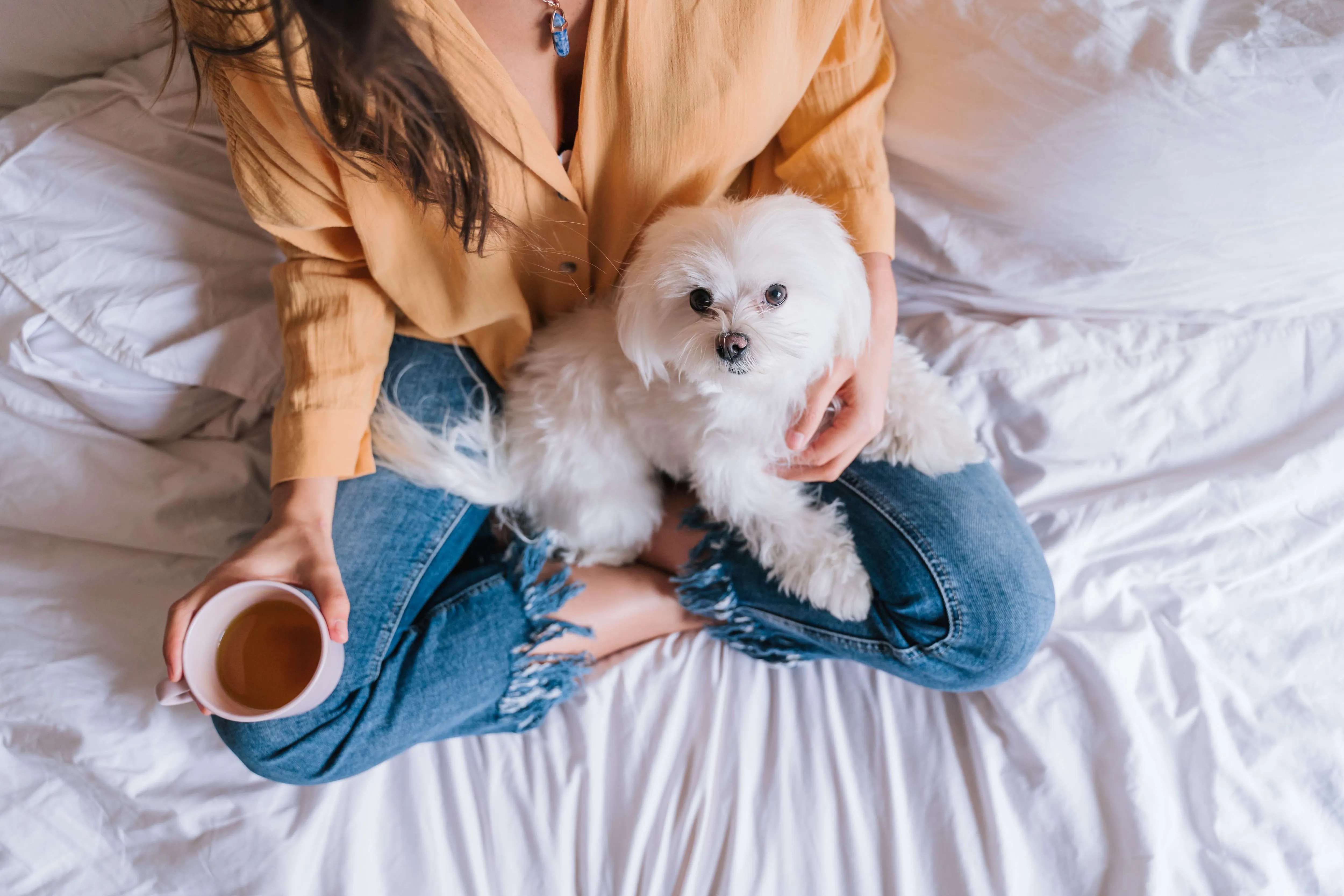 A woman gently holding a white Maltese dog with a luxurious, non-shedding coat on a bed.
A woman gently holding a white Maltese dog with a luxurious, non-shedding coat on a bed.
The Maltese is a small, low-shedding dog breed celebrated for its luxurious white coat. They make affectionate and playful companions, particularly for pet parents committed to their significant grooming needs. A short “puppy” cut can simplify maintenance, though their long hair is equally stunning. This makes them a perfect smallest dog breed that doesn’t shed for many.
18. Soft Coated Wheaten Terrier
The Soft Coated Wheaten Terrier is a medium-sized Irish breed aptly named for its incredibly soft, silky coat that sheds minimally. True to their terrier heritage, Wheatens possess high energy levels throughout their lives, necessitating plenty of exercise and mental stimulation to ensure good behavior.
19. Coton de Tulear
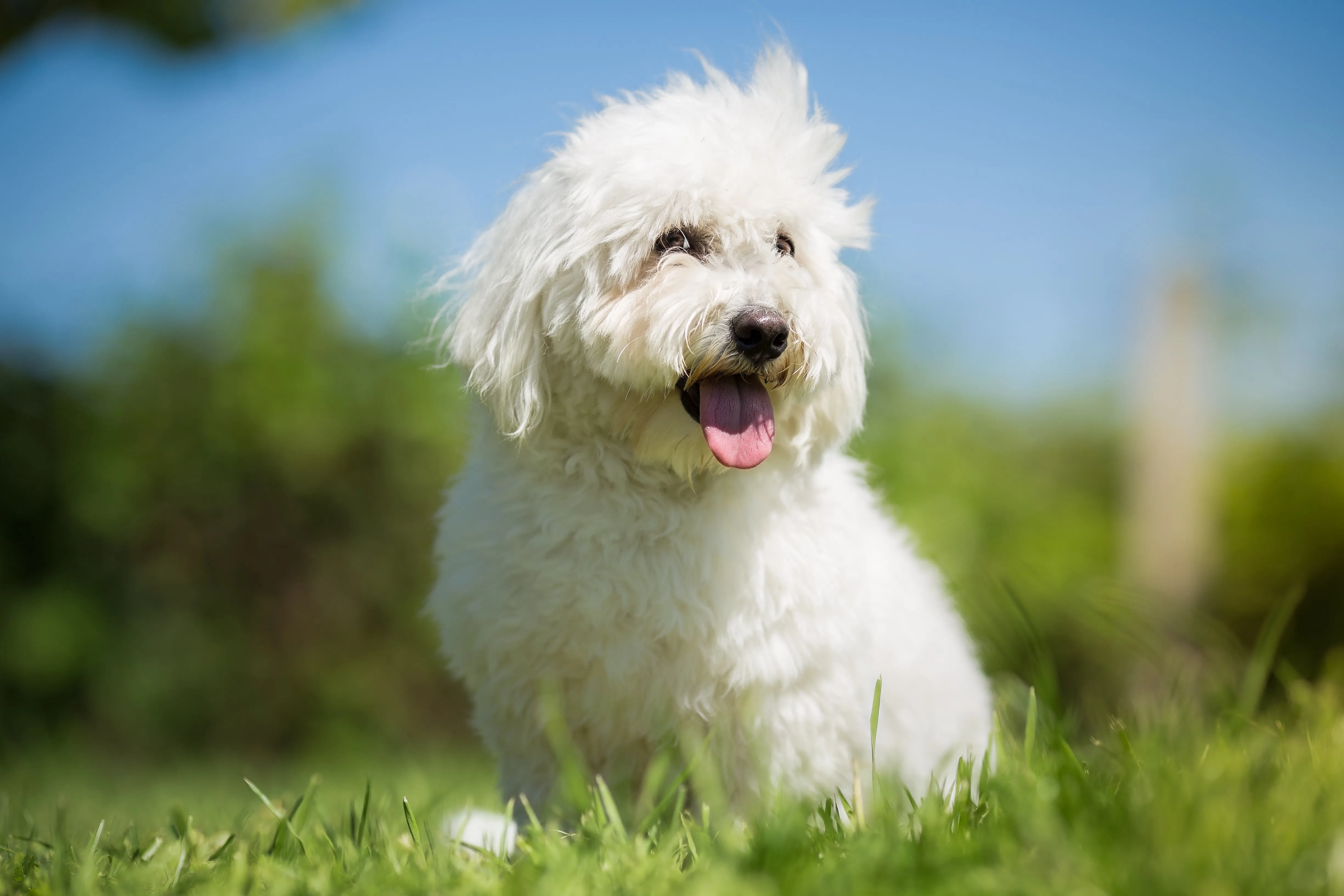 A small white Coton de Tulear with a fluffy, low-shedding coat sitting in green grass, with its hair gently blowing.
A small white Coton de Tulear with a fluffy, low-shedding coat sitting in green grass, with its hair gently blowing.
Originating from Madagascar, the Coton de Tulear is a small, easygoing, low-shedding breed. Their gentle nature makes them well-suited for families with children and other pets, especially when proper introductions are facilitated.
20. Schnoodle
Unlike many “doodle” breeds that combine a Poodle with a shedding dog, the Schnoodle is a mix of two low-shedding breeds: the Schnauzer and the Poodle. Their coat can be curly or wavy, depending on their genetic inheritance, but it consistently exhibits low-shedding qualities.
21. Bedlington Terrier
 A unique white Bedlington Terrier with a curly, lamb-like coat running gracefully through fresh snow.
A unique white Bedlington Terrier with a curly, lamb-like coat running gracefully through fresh snow.
Often described as “a lamb in dog’s clothing,” the Bedlington Terrier is a small, curly-haired breed known for its distinctive topknot and pom-pom ear tufts. These devoted dogs thrive on human companionship and can be prone to separation anxiety if left alone for extended periods, making close attention vital.
22. Xoloitzcuintli
Also known as Mexican Hairless Dogs, Xoloitzcuintli are among the world’s oldest and rarest breeds. Available in toy, miniature, and standard sizes, they can be either hairless or possess a short, smooth coat. Both variations are considered low-shedding and suitable for those seeking minimal hair.
23. Whoodle
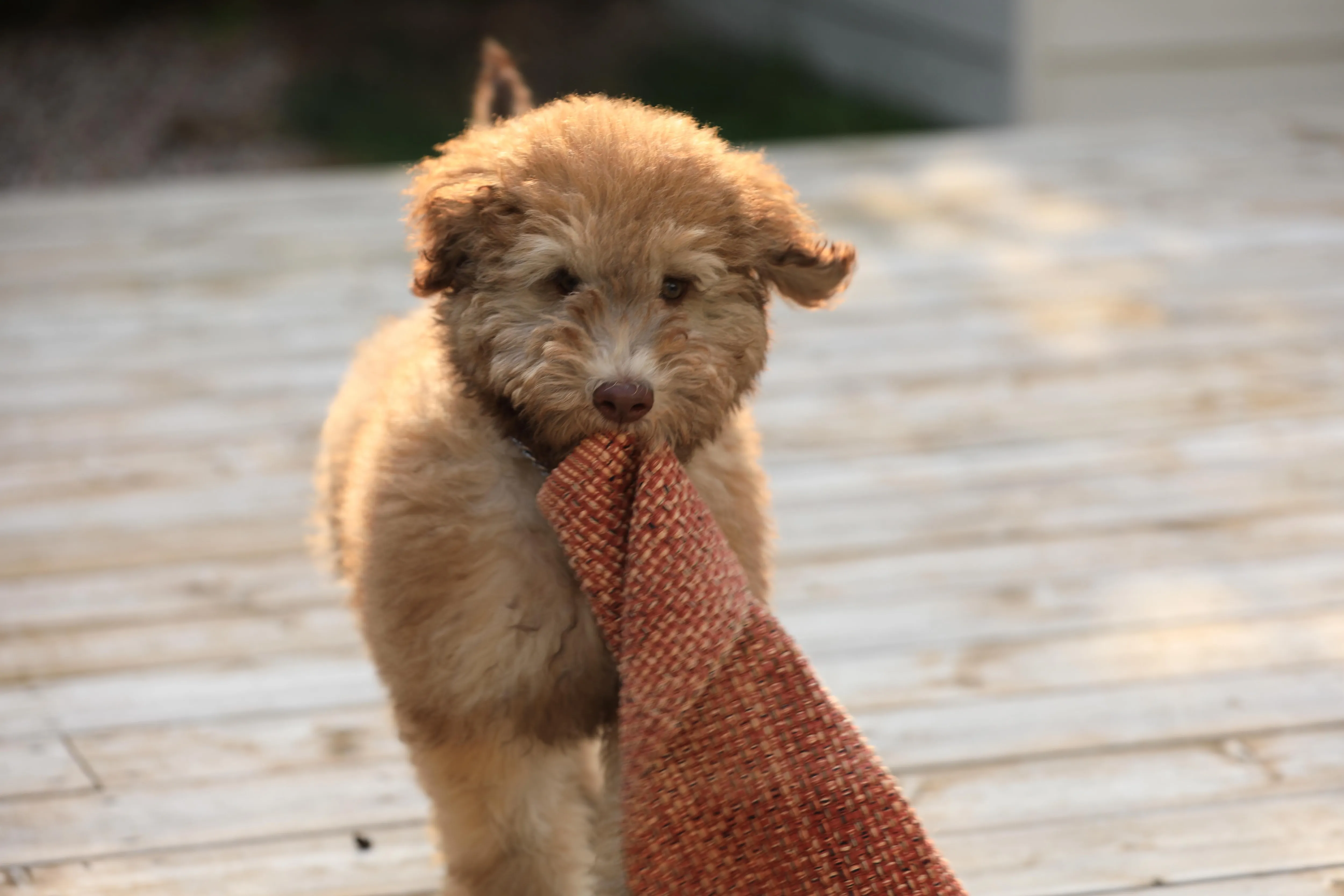 A playful tan Whoodle puppy with a soft, wavy coat dragging a washcloth.
A playful tan Whoodle puppy with a soft, wavy coat dragging a washcloth.
A delightful cross between a Soft-Coated Wheaten Terrier and a Poodle, the Whoodle is a friendly dog that sheds very little. They inherit intelligence and an affectionate nature from both parent breeds, making them engaging and devoted companions.
24. Bernedoodle
Bernedoodles are a popular crossbreed resulting from the combination of Bernese Mountain Dogs and Poodles. Their friendly, affectionate nature and gentle demeanor make these large, low-shedding dogs a favored choice for families with children and other pets. Ample exercise is necessary to keep these active dogs content. These are also great protective dog breeds that don’t shed given their size and heritage.
25. Shorkie
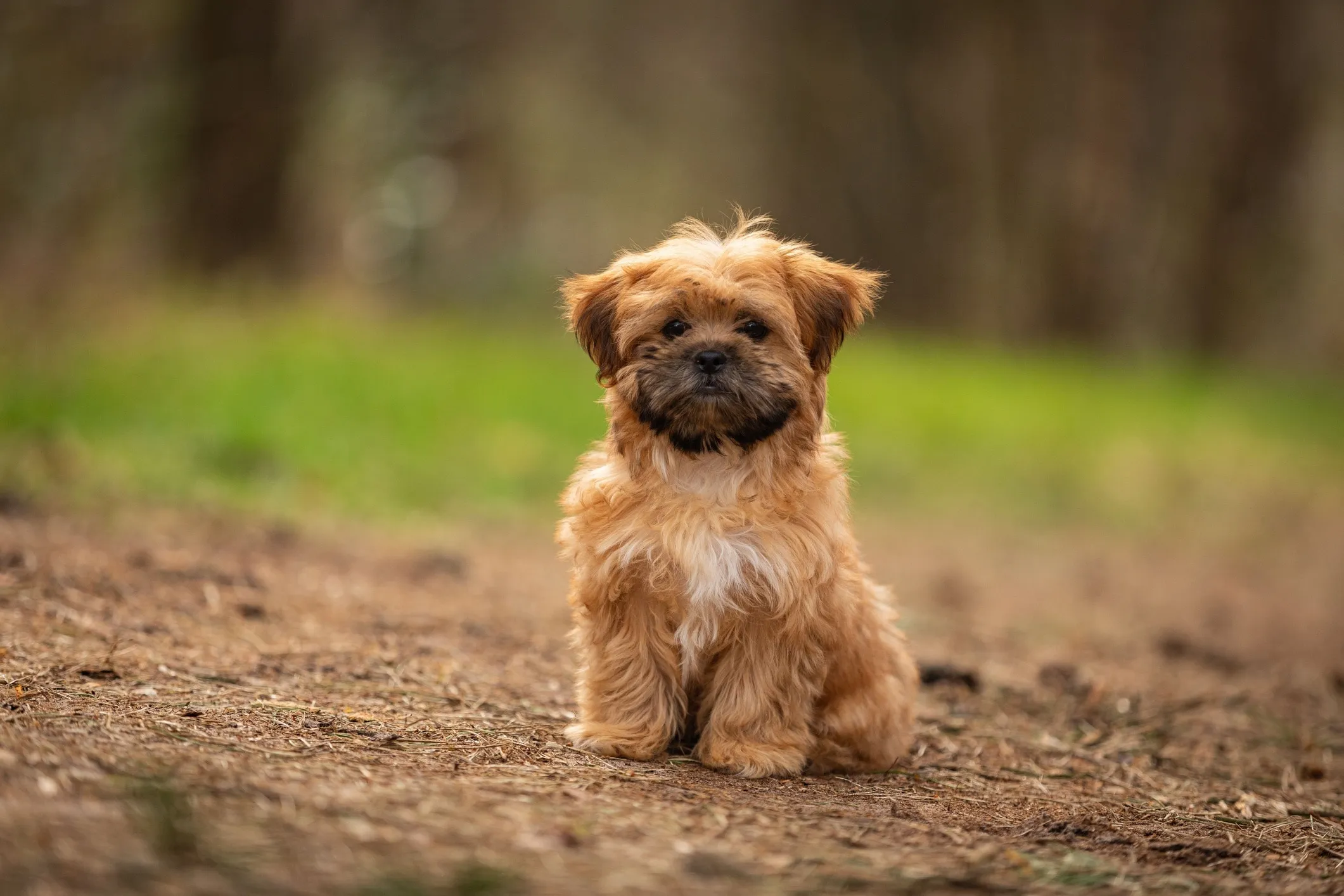 A small tan and black Shorkie dog with a soft coat sitting on a hiking trail, a mix of two low-shedding breeds.
A small tan and black Shorkie dog with a soft coat sitting on a hiking trail, a mix of two low-shedding breeds.
The Shorkie is a mixed breed combining two low-shedding dogs: the Shih Tzu and the Yorkshire Terrier. They embody the best traits of both breeds—small, playful, and friendly. Like many low-shedding dogs, Shorkies require a consistent grooming routine to keep their coats healthy.
26. Afghan Hound
Afghan Hounds are striking dogs, famed for their long, flowing coats and slender, agile builds. Known as one of the fastest dog breeds globally, they are loving toward their families but can be reserved with strangers. Early and consistent socialization is crucial for this distinguished low-shedding breed.
27. Barbet
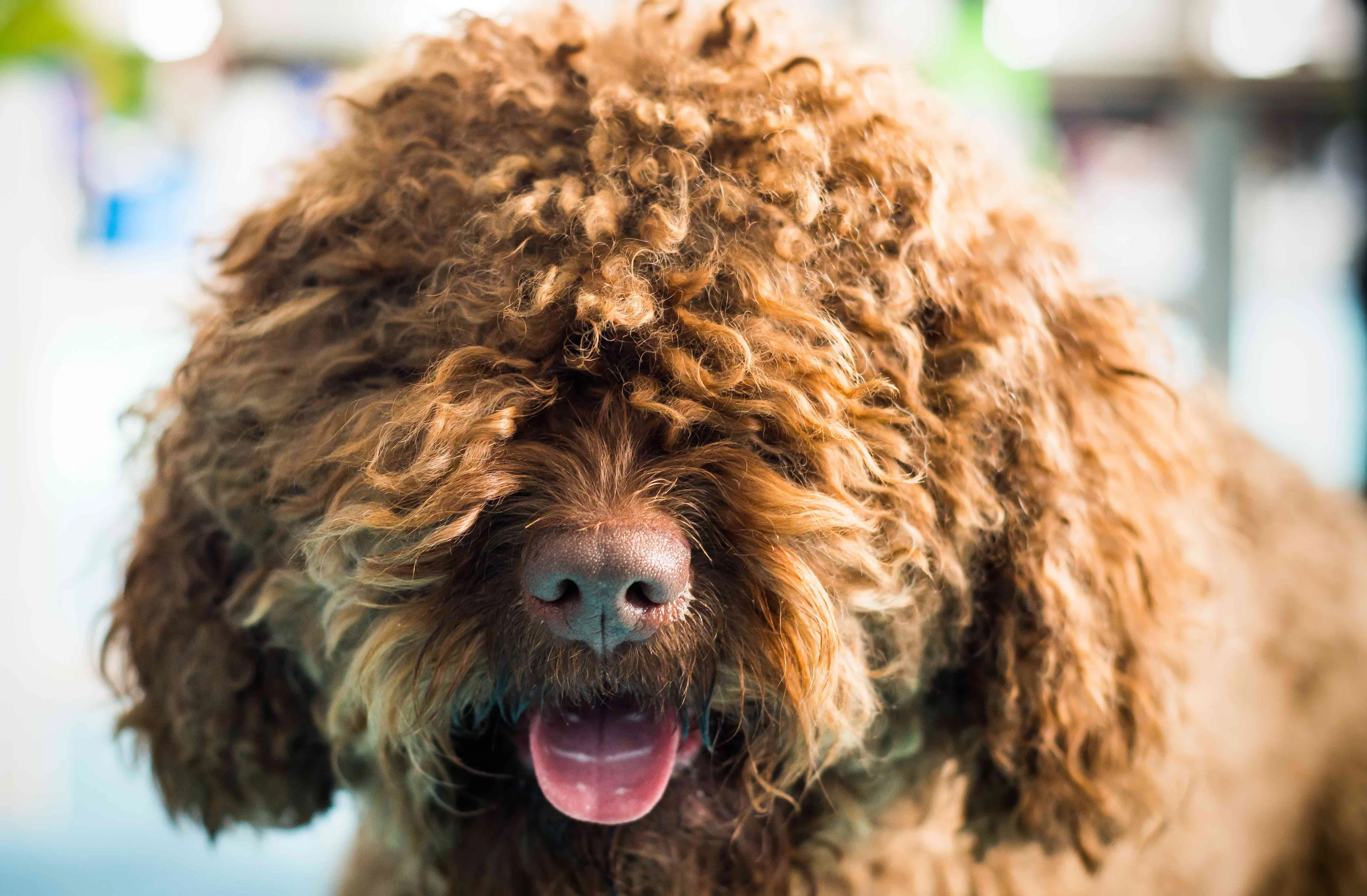 A close-up of a curly red Barbet dog's face, highlighting its shaggy, woolly, low-shedding coat and characteristic beard.
A close-up of a curly red Barbet dog's face, highlighting its shaggy, woolly, low-shedding coat and characteristic beard.
The Barbet, pronounced “bar-bay,” is a cheerful pup with a shaggy, woolly, low-shedding coat. Its name, derived from the French word barbe (beard), alludes to its distinctive hairy chin. This sizable dog loves to swim, a pastime facilitated by its protective curly coat. Regular brushing, two to three times a week, helps maintain its coat, especially after water activities.
28. Shih-Poo
The Shih-Poo is a mixed breed resulting from a cross between a Shih Tzu and a Poodle (most often a Toy Poodle). This small, low-shedding pup thrives in almost any living situation, provided it receives around 30 minutes of daily exercise and a good brushing session to maintain its coat.
29. Peruvian Inca Orchid
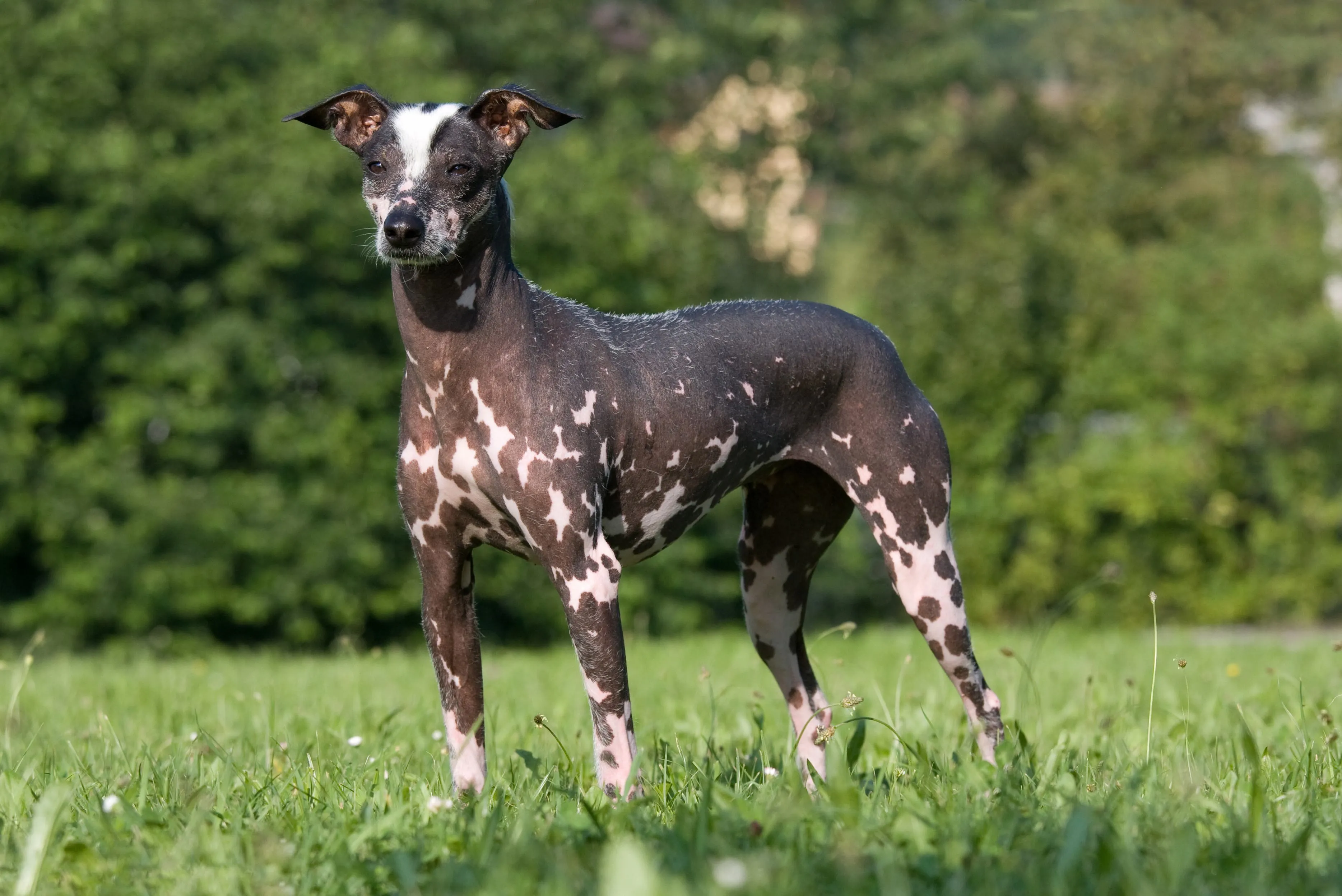 A rare Peruvian Inca Orchid dog with a distinctive hairless body, making it a truly non-shedding breed.
A rare Peruvian Inca Orchid dog with a distinctive hairless body, making it a truly non-shedding breed.
Though a rare find, Peruvian Inca Orchids are a true low-shedding option thanks to their predominantly hairless bodies. As an ancient breed and the national dog of Peru, they come in small, medium, and large sizes, offering a unique companion for those with severe allergies.
30. Malshi
As a delightful cross between the Maltese and Shih Tzu, the Malshi is a happy, small, low-shedding dog. They thrive on close companionship and are happiest when their favorite humans are near, making them ideal lap dogs that require regular grooming attention.
Tips for Living with a Low-Shedding Dog
Choosing a dog breed that doesn’t shed much is a fantastic first step, but a few ongoing practices are essential for a truly comfortable and allergen-managed home.
Prioritize Regular Grooming
Even low-shedding dogs require consistent grooming to manage their coats and minimize allergens. Their hair often grows continuously and can matt if not regularly brushed.
- Brushing: Aim for daily or every-other-day brushing for most breeds with curly or long, silky coats. This removes loose hairs and dander before they can spread.
- Bathing: Regular bathing (every 4-6 weeks, or as recommended by your vet or groomer) helps wash away dander and other allergens. Use a gentle, dog-specific shampoo. Products designed to reduce pet dander can also be beneficial.
- Professional Trimming: Many low-shedding breeds require professional grooming every 6-8 weeks to keep their coats at a manageable length and prevent matting, especially breeds like Poodles and Schnauzers. Budget for this expense or learn proper at-home grooming techniques.
Maintain a Pristine Home Environment
Minimizing allergens in your living space is as crucial as dog grooming.
- Vacuum Regularly: Use a vacuum cleaner with a HEPA filter, especially on carpets, rugs, and upholstery, to capture dander and pet hair.
- Dust Frequently: Dust surfaces with a damp cloth to pick up settled allergens.
- Wash Bedding: Regularly wash your dog’s bedding and your own linens in hot water to remove dander.
- Air Purification: Consider using air purifiers with HEPA filters in main living areas and bedrooms to help remove airborne allergens.
- Designated Dog-Free Zones: If allergies are severe, designate certain areas (like bedrooms) as dog-free zones to create a sanctuary from allergens.
Consult Your Healthcare Provider
Managing pet allergies is a personal journey, and professional medical advice is invaluable.
- Allergy Management Plan: Talk to your doctor or allergist about your symptoms and potential treatment options, which may include over-the-counter or prescription medications, nasal sprays, or allergy shots (immunotherapy).
- Understand Triggers: Be aware that beyond dander, dog saliva and urine also contain allergens. Avoid letting your dog lick your face and practice good hand hygiene after handling your pet.
Bringing home a low-shedding dog can dramatically improve the quality of life for individuals with allergies, allowing them to experience the profound joy and companionship that pets offer without the constant discomfort of allergic reactions. By choosing the right breed and implementing consistent care routines, you can create a happy, healthy, and low-allergen home for both you and your furry friend.
